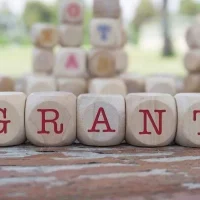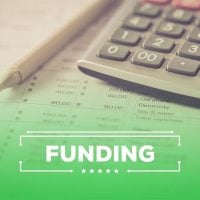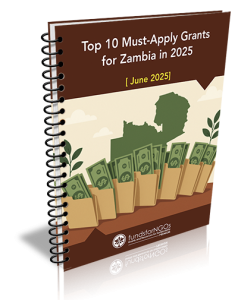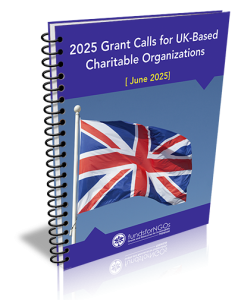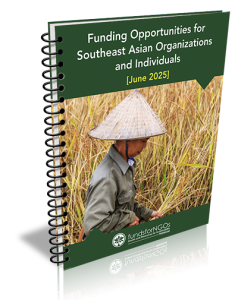Deadline: 9-May-23
The Environmental Protection Agency (EPA) is seeking applications for its Wildfire Smoke Preparedness in Community Buildings Grant Program to conduct demonstrations, technical assistance, training, education and/or outreach projects that seek to improve public health protection against smoke from wildfires by enhancing preparedness in community buildings.
Program Goals and Objectives
- EPA is requesting applications for the assessment, prevention, control, or abatement of wildfire smoke hazards and related activities that target public buildings and/or buildings that serve the public, but privately owned or operated.
- Activities will improve the capability and capacity of communities and buildings to effectively reduce indoor concentrations of air pollutants in wildfire smoke, especially PM. This may include improvements to building structures, and increasing the capacity of building owners, operators, service providers, occupants, and others to effectively manage buildings during wildfire smoke events. Specific activities may include, but are not limited to the following:
- Smoke Readiness Planning to develop specific plans, procedures, and decision-making frameworks at the building or community level to be implemented before and during wildfire smoke events.
- Outreach activities such as translation and culturally appropriate adaptation of wildfire smoke preparedness materials, or targeted outreach to members of the public through community organizations and institutions.
- Technical training on the effectiveness and implementation of ventilation and filtration strategies for wildfire smoke mitigation in different types of buildings with various HVAC systems.
- Deployment of portable air cleaners or DIY air cleaners for use in community buildings.
- Indoor and outdoor air quality monitoring to evaluate the effectiveness of wildfire smoke mitigation activities.
- Identification and initial preparation of community cleaner air spaces or cleaner air shelters.
- Significant improvements to buildings such as upgrades and repairs to HVAC units or systems and weatherization. Such activities should include training and planning elements to ensure that improvements are properly maintained and operated.
- Applicants are encouraged to integrate project activities under a comprehensive smoke management plan at the building or community level, where appropriate.
- All applications should:
- Characterize the population served by the project, such as the estimated number of people served, and the location and type of community (e.g., urban, rural, etc.). Maps, data, analyses, and results characterizing the population served by the project may be included as an optional attachment.
- Describe how much or how often the buildings or communities served by the project are impacted by wildfire smoke (e.g., number of days the community was impacted by smoke; number of school closures due to smoke; number of smoke-related air quality alerts issued; etc. over a recent timeframe, such as each of the past 3 years).
- Describe a detailed approach to measure project effectiveness (e.g., evaluation of knowledge or skills gained from outreach and training activities, collection of air quality monitoring data to demonstrate lower indoor PM concentrations as a result of changes to the operation or maintenance of a building).
Funding Information
- The amount of federal funding requested by an applicant must not exceed $2,000,000.
- The total estimated funding available for awards under this competitive opportunity is approximately $10,670,000. Funding is dependent upon funding availability, Agency priorities, and other applicable considerations.
- A maximum of $2,667,500 (25%) of total funding available may go to award recipients in any one State.
- Estimated Total Program Funding: $10,670,000
- Award Ceiling: $2,000,000
- Award Floor: $100,000
Outputs
- The term “output” means an environmental activity, effort, and/or associated work product related to an environmental goal and objective that will be produced or provided over a period of time or by a specified date. Outputs may be quantitative or qualitative but must be measurable during an assistance agreement funding period.
- Expected outputs from the projects to be funded under this announcement include, but are not limited to:
- Number of communities with an established Smoke Readiness Plan;
- Number of wildfire smoke preparedness materials translated or culturally adapted;
- Number of building owners, managers, or technicians trained;
- Number of technical training events conducted;
- Number of buildings that received portable air cleaners and the number they received;
- Number of buildings served by an indoor and outdoor air monitoring network; and/or
- Number of community cleaner air spaces available for wildfire smoke events.
- Number of buildings upgraded or repaired to improve wildfire smoke mitigation.
Outcomes
- The term “outcome” means the result, effect or consequence that will occur from carrying out an environmental program or activity that is related to an environmental or programmatic goal or objective. Outcomes may be environmental, behavioral, health-related or programmatic in nature, but must also be quantitative. They may not necessarily be achievable within an assistance agreement funding period.
- Expected outcomes from the projects to be funded under this announcement include, but are not limited to:
- Expansion in communities and/or community buildings adopting Smoke Readiness Plans;
- Increase in awareness, capacity, and action to reduce building occupants’ exposure to wildfire smoke within highly impacted communities;
- Increase in community buildings that effectively reduce occupants’ exposure to wildfire smoke;
- Increase in population served by community buildings that effectively reduce occupants’ exposure to wildfire smoke; and/or
- Increase in availability of air monitoring data to inform wildfire smoke management activities.
Eligibility Criteria
- In accordance with Assistance Listing No. 66.044 and EPA’s Policy for Competition of Assistance Agreements competition under this solicitation is available to states (including the District of Columbia, U.S. territories and possessions); federally recognized Tribes, public pre-schools, local educational agencies and public and private non-profit organizations.
- Consistent with the term “local educational agency” means a public board of education or other public authority legally constituted within a State for either administrative control or direction of, or to perform a service function for, public elementary schools or secondary schools in a city, county, township, school district, or other political subdivision of a State, or of or for a combination of school districts or counties that is recognized in a State as an administrative agency for its public elementary schools or secondary schools. Consistent with the definition of local government at the term public pre-school means any pre-kindergarten program that is funded by any unit of government within a state, including a school district.
- Consistent with the definition of Nonprofit organization at the term nonprofit organization means any corporation, trust, association, cooperative, or other organization that is operated mainly for scientific, educational, service, charitable, or similar purpose in the public interest and is not organized primarily for profit; and uses net proceeds to maintain, improve, or expand the operation of the organization. The term includes tax-exempt nonprofit neighborhood and labor organizations. Non-profit institutions of higher education are eligible to apply. Hospitals operated by state, tribal, or local governments or that meet the definition of nonprofit at are eligible to apply as nonprofits or as instrumentalities of the unit of government depending on the applicable law. For-profit colleges, universities, trade schools, and hospitals are ineligible. Nonprofit organizations that are not exempt from taxation under section 501 of the Internal Revenue Code must submit other forms of documentation of nonprofit status; such as certificates of incorporation as nonprofit under state or tribal law. Nonprofit organizations exempt from taxation under section 501(c)(4) of the Internal Revenue Code that lobby are not eligible for EPA funding as provided in the Lobbying Disclosure Act.
- For-profit organizations are not an eligible entity for this funding opportunity.
For more information, visit Grants.gov.

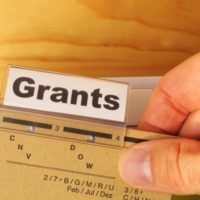



![Call for Applications: “Voices in Motion” Program [Sri Lanka] - fundsforNGOs Call for Applications: “Voices in Motion” Program [Sri Lanka]](https://www2.fundsforngos.org/wp-content/uploads/2023/04/dance-200x200.jpg)









